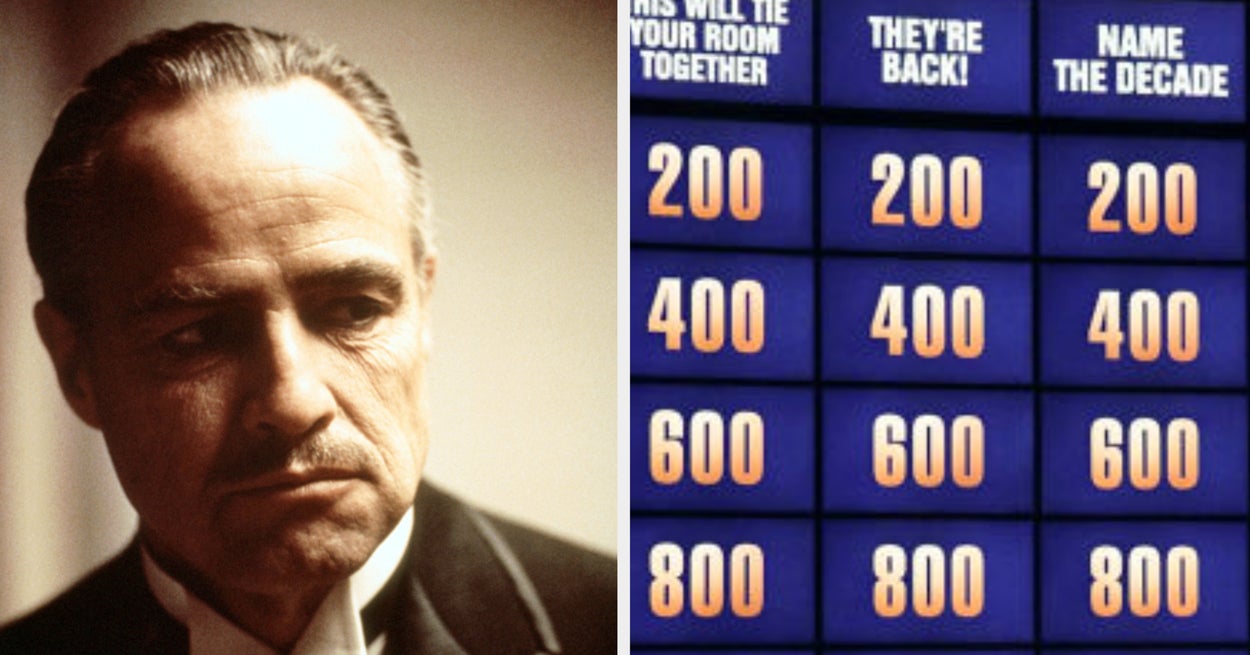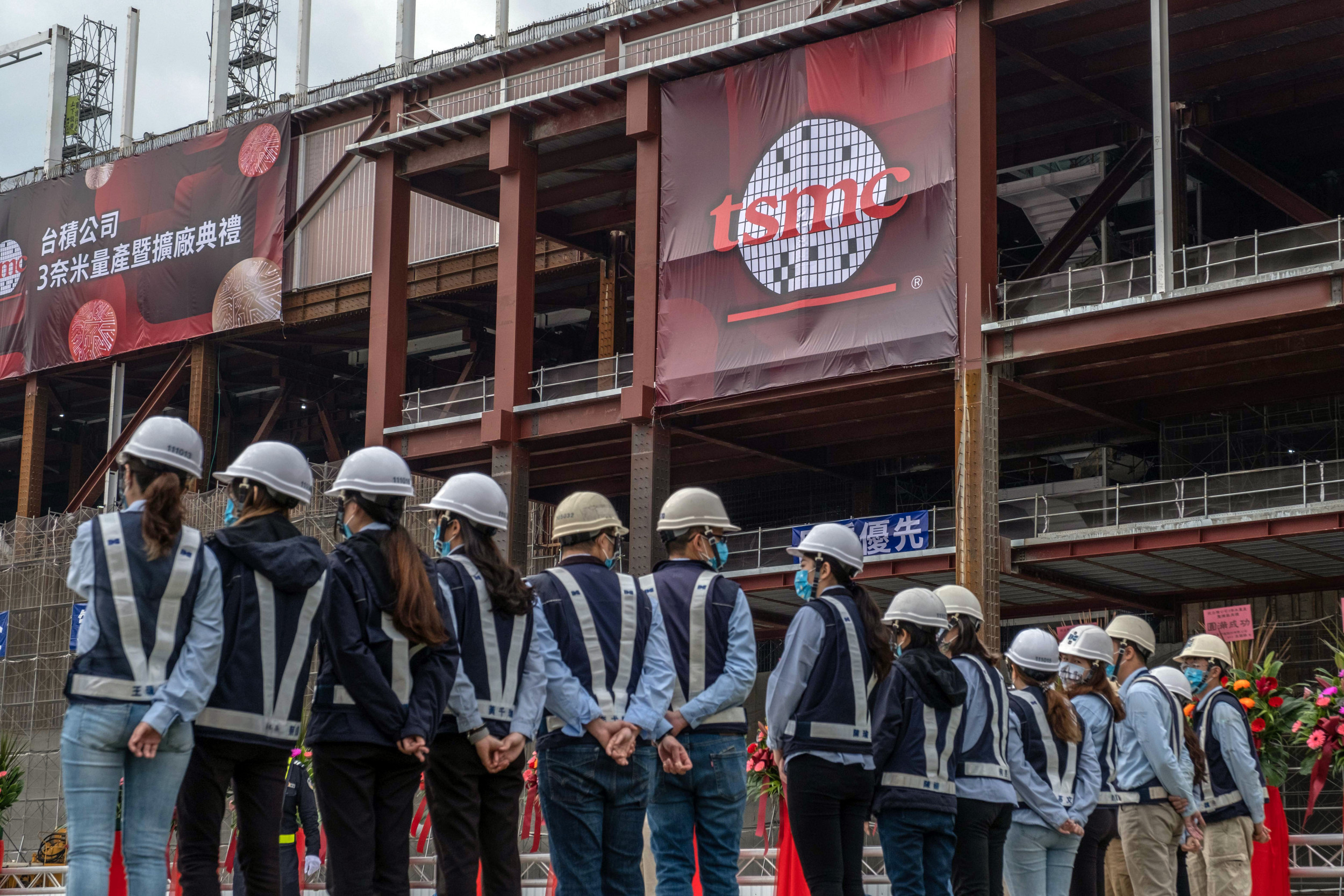Most of the time, the best TVs for gaming are the best TVs you can buy, period. That said, there are a few key features to prioritize when picking out a big screen for your PlayStation 5 or Xbox Series X. While nobody needs a fancy TV to just enjoy a video game, the right set can help you maximize your experience. If you’re not sure where to begin, we’ve laid out some helpful advice for finding something good and researched a few well-reviewed gaming TVs that should suit your needs today.
What to look for in a gaming TV
Whether you use it for gaming or not, all good TVs are built on the same foundations. You want a 4K resolution, high-enough brightness to overcome glare and make HDR content pop, a relatively high contrast ratio with deep and uniform black tones, colors that find the right balance between accuracy and saturation and wide viewing angles. For video games specifically, you want a TV with minimal input lag and fast motion response, with no blur or other unwanted artifacts behind quick-moving objects. Of course, finding a set that does all of this well and fits into your budget can be tricky.
OLED and LCD
For now, top OLED TVs generally offer the best picture quality for gaming or otherwise. But good OLED sets usually cost more than their LCD counterparts, and some models may not get bright enough for those who have their TV set in a particularly bright room.
More specifically, modern OLED TVs may utilize different types of OLED display tech: WOLED (i.e., “White OLED”) or the newer QD-OLED. We won’t dig too deep into how the two diverge in panel composition and subpixel structure, but the simplified version is that QD-OLED displays use a layer of quantum dots (hence the “QD”) to deliver a wider gamut of more vibrant colors and higher overall brightness than traditional WOLED sets.
This doesn’t mean all QD-OLED TVs are inherently better: How well an individual set performs is more important than the panel it uses, and some premium WOLED TVs like the LG G4 utilize a form of display tech called Micro Lens Array (MLA) to greatly improve brightness. (Though LG and others now appear to be ditching that for a new “four-stack” OLED structure in their next top-end models.) And virtually all OLED TVs share the same core strengths. Broadly speaking, though, a reasonably priced QD-OLED set looks like the best balance of value and picture quality today.
If you opt for an LCD TV— whether to save cash or stick in room with poor light control — an advanced backlight with smaller and more precise mini LEDs and effective full-array local dimming will usually improve contrast and lighting detail. Many of these TVs, including some budget-level models, also use quantum dots to enhance colors (and are labeled as "QLED" TVs). They usually aren’t as vivid or fast in motion as the top OLED sets, but they’re often brighter and more affordable, and the best can still produce an excellent image in their own right.
HDMI 2.1
To get the most out of a PlayStation 5 or Xbox Series X/S, your TV should have full HDMI 2.1 support. This update to the HDMI spec enables a higher maximum bandwidth — 48 gigabits per second, up from HDMI 2.0’s 18 Gbps — and a handful of features that are beneficial for gaming performance specifically. Those include variable refresh rate (VRR) and automatic low latency mode (ALLM), which we detail further below.
Beyond that, perhaps the chief perk of HDMI 2.1 is its ability to transmit sharp 4K video up to a 120Hz refresh rate with modern consoles like the PS5 and Xbox Series X, or up to 144Hz with a powerful gaming PC. Not every PS5 or Xbox Series X/S game supports frame rates that high — and some only do at lower resolutions — but those that do will look and feel especially fluid in motion. HDMI 2.1 also includes support for Enhanced Audio Return Channel (eARC), which allows you to pass higher-quality lossless audio from a source device connected to the TV to a compatible soundbar or receiver.
The more full HDMI 2.1 ports your TV has, the better. “Full” is the key word there. As reported by TFT Central, because HDMI 2.1 is backwards compatible with HDMI 2.0, TV and monitor manufacturers have been allowed to brand HDMI ports as “HDMI 2.1” even if they lack full (or any) support for the spec’s upgraded features. We recommend a few TVs below that have true HDMI 2.1 ports, but if you’re buying a new TV for gaming, make sure your chosen set isn’t trying to hide any capabilities you may consider essential.
While HDMI 2.1 is the latest and greatest today, it’s worth noting that the HDMI Forum officially revealed a new HDMI 2.2 spec at CES 2025. This update promises a greater maximum bandwidth of 96 Gbps, which should technically enable even higher refresh rates and resolutions. It could also help reduce hiccups in audio and video syncing (i.e., annoying lip-sync errors). If history is any indication, though, we’re likely several years away from HDMI 2.2 ports appearing on TVs you can actually buy. Even then, the only people who could take advantage of the theoretical resolutions and refresh rates allowed by the spec are those who connect a super-powerful gaming PC to their TV. But this could always change with whatever the next PlayStation and Xbox consoles bring.
HDR — High Dynamic Range
HDR refers to a TV's ability to display a wider range between the darkest and brightest parts of a picture. This broader range can bring out details that would otherwise be missing on a standard dynamic range (SDR) TV, in both the very dark and (especially) very bright areas of an image. HDR typically comes with an improvement to color reproduction as well, displaying a larger palette of more vibrant colors that brings content closer to its creator’s original vision.
To get an HDR picture, you need both content that is mastered to take advantage of the tech and a TV capable of displaying that content. HDR also comes in a variety of formats, which are generally split between those that utilize static metadata (e.g., HDR10) and those that utilize dynamic metadata (e.g., HDR10+, Dolby Vision). In short, the latter allows a TV to optimize its brightness and colors on a per-scene or even per-frame basis, while the former uses one set of optimized settings for the entirety of the given content. Support for these formats can differ depending on the TV, content and game console you use. The Xbox Series X and S, for example, support Dolby Vision for gaming, while the PS5 does not.
The good news is that most TVs you’d buy today are HDR-ready in some fashion, even on the budget end of the market. The catch is that some TVs are much better at getting the most out of HDR than others. The same goes for actual content mastered in HDR. With video games in particular, there aren’t quite as many titles designed to take advantage of HDR as there are movies (though the number is growing all the time), and the variance in HDR quality tends to be wider.
HGiG — HDR Gaming Interest Group
HGiG stands for the HDR Gaming Interest Group. Sony and Microsoft are both members, as are many TV makers and game developers. What this means is that, ideally, all the groups communicate information so that you can start up a new game on a console or PC and have it automatically recognize your display. Once that happens, the game can adjust the internal settings to adjust for that display's capabilities and give you the best picture quality possible, without losing details in the brightest or darkest areas of the screen. For example, daylight at the end of a dark tunnel may portray a brightly lit environment instead of looking like an overexposed white blob.
This is a good thing, but the reality is a bit more complicated. Not all TVs highlight HGiG compatibility in their settings menu, while only some PlayStation and Xbox games recognize and follow the guidelines. If an HGiG option is listed in your TV's tone mapping settings, you should turn it on prior to running the console's HDR settings. Then, if you're playing a game that supports HDR and HGiG, you should be in good shape without having to adjust the various luminance levels again. Still, how all of this looks to you might differ depending on your TV and the game you’re playing. Owners of certain LG OLED TVs, for instance, may prefer their TV’s Dynamic Tone Mapping setting. Use whatever settings you think look best.
ALLM — Auto Low Latency Mode
ALLM lets a compatible source (like your PS5 or Xbox) tell your display to switch into a picture mode that reduces lag between receiving each frame of an image and displaying it on the TV. This cuts out additional processing that could be the milliseconds of difference between landing a precise input or not. Put another way, it lets your TV automatically enable its "Game" mode when it detects that you've launched a game. A good modern TV can do this without forcing you to enter any menus, then switch back when you'd rather watch a movie or TV show.
VRR — Variable Refresh Rate
VRR should sound familiar to most gamers at this point. Many players have experienced slowdown, screen tearing or stuttering as a system struggles to render each frame at the target speed, which is most commonly 60 or 30 fps on a TV. With VRR, everything stays in sync: Your display won't show the next frame until it's ready, which can make things feel smoother and more responsive, even if the system fails to deliver on its target frame rate.
There are a few different implementations of VRR available, including Nvidia’s G-Sync, AMD’s FreeSync and the HDMI Forum’s VRR spec, which is part of the full HDMI 2.1 standard. Both a TV and an input device need to support the same VRR tech for it to work, and different devices may only support VRR within a specific refresh rate window. On a 120Hz display, for instance, the PS5’s VRR only works between 48Hz and 120Hz.
As a reminder, the PS5 supports HDMI Forum VRR, the Xbox Series X/S support HDMI Forum VRR and FreeSync, while gaming PCs may support G-Sync or FreeSync depending on whether they use a Nvidia or AMD graphics card. A great gaming TV supports all the big VRR formats, but missing, say, G-Sync, isn’t a killer if you only game on a PS5 or Xbox.
8K (You don't need it)
One thing you don’t need to worry about is 8K support. Although the PS5 and Xbox Series X are theoretically capable of outputting 8K video, almost no games are made for that resolution, and 8K’s practical benefits are extremely minimal unless you plan on sitting unreasonably close to a massive TV. The few 8K TVs on the market are usually very expensive as well.
Good gaming TVs you can get right now
There’s never an ideal time to buy a new TV. Prices for today’s models are always dropping, and next year’s upgrades are always just around the corner. Case in point: Our latest update comes just after CES, where Samsung and LG announced initial details for much of their 2025 lineups while Hisense, TCL and Panasonic unveiled a smaller selection of sets. A few of these could be worth waiting for, particularly on the upper-end. In the price ranges where most people shop, though, most of the new sets seem to be more iterative than transformative.
We’re still several months until 2024’s TVs are replaced for good, and when their successors do arrive, they’ll cost much more to start. So, per usual, you’ll get the most value by picking up a still-good TV from last year while it’s available for less. While we at Engadget do not formally review TVs, we’ve researched the market and rounded up those sets that have been widely well-received by other professional review sites we trust, including Rtings, Wirecutter, Reviewed, PCMag and others.
Screen sizes: 42", 48", 55", 65", 77", 83" | Display type: WOLED | Resolution: 4K | Maximum refresh rate: 144Hz | HDR formats: Dolby Vision, HDR10, HLG | HDMI ports: 4x HDMI 2.1 | VRR: HDMI Forum VRR, FreeSync, G-Sync certified | Smart OS: webOS | Screen form: Flat | ALLM: Yes | TV tuner: ATSC 1.0
The LG C4 has just about everything we look for in a good gaming TV, according to reviews around the web. Its superb OLED panel delivers excellent contrast, bold colors, inky black tones, low input lag, clear motion and wide viewing angles. It has four full HDMI 2.1 ports that can output 4K 120Hz video on a PS5 or Xbox Series X (or 4K 144Hz on a PC). It follows the HGiG’s HDR guidelines and supports ALLM, the big three VRR formats and all the major HDR standards (Dolby Vision included). It also comes in a wide range of sizes, though the smallest two models are slightly less bright than the rest of the lineup.
The caveat is that the C4 uses a more traditional WOLED panel, so it lags a bit behind other high-end sets like the Samsung S90D and Sony A95L, which can produce brighter highlights and generally richer colors thanks to their QD-OLED displays. The S90D seems particularly appealing since it usually sits around the same price as the C4 and offers nearly all of the same gaming-friendly features.
However, Samsung is selling that TV with both QD-OLED and WOLED panels depending on your country and chosen size. The 55-, 65- and 75-inch models use the superior QD-OLED display in North America, but things are less straightforward elsewhere, and Samsung doesn’t make it easy to distinguish between the two panel types. Given that the C4 still looks great — especially in darker rooms — we have a hard time rewarding Samsung’s panel lottery with a recommendation. Like all Samsung TVs, the S90D also lacks support for Dolby Vision HDR.
The Sony A95L, meanwhile, is another QD-OLED TV that’s received virtually universal praise, with many reviewers saying it tops any alternative from Samsung or LG. The issue is that it’s wildly expensive, with a 55-inch model priced more than $1,000 higher than the LG C4 as of this writing. It’s also limited to two HDMI 2.1 ports, one of which is the eARC port you may need to connect a soundbar or receiver. That makes it a little less convenient if you want to hook up multiple consoles at once. But if money is no object, it should be great.
Pros
- Fantastic contrast with deep black tones
- Low input lag and clear motion
- Four HDMI 2.1 ports
- Available in sizes up to 83 inches
Cons
- Not as bright or color-rich as top QD-OLED TVs
- Built-in speakers could be better
$1,275 at Walmart
Screen sizes: 55", 65", 75", 85" | Display type: QLED with mini-LED backlight (ADS Pro panel on 75", VA panel on others) | Resolution: 4K | Maximum refresh rate: 144Hz | HDR formats: Dolby Vision, HDR10, HDR10+, HLG | HDMI ports: 2x HDMI 2.1, 2x HDMI 2.0 | VRR: HDMI Forum VRR, FreeSync Premium Pro, G-Sync compatible | Smart OS: Google TV | Screen form: Flat | ALLM: Yes | TV tuner: ATSC 3.0
The TVs above are all pretty pricey. If you’re on more of a budget, the Hisense U7N, a QLED TV with mini LED backlighting, should be a strong value. It’s not a better gaming TV than some pricier LCD sets in a vacuum, as it only has two full HDMI 2.1 ports, it doesn't have the absolute brightest panel and its image will wash out when viewed from an angle. You may need to tinker with the default picture to get the most out of it, too.
But reviewers suggest that, for hundreds less, it’ll still look good in any lighting condition, with impressive brightness levels for the money, 4K 144Hz support, all the main HDR formats, VRR, ALLM and low input lag in its game mode. You’ll still sacrifice contrast compared to a good OLED TV, however, and motion won’t look quite as fast or smooth. It’s also worth noting that the 75-inch model uses a different panel type than the others, one that should improve its viewing angles but lessen its contrast.
If you’re willing to pay more for a higher-end LED TV, the Hisense U8N is the company’s step-up model for 2024. It should deliver better brightness, colors and contrast, though some reviews say that it may have accuracy issues out of the box. And again, the OLED TVs above will generally look better so long as you don’t need something searingly bright.
Other generally well-regarded LCD TVs in this range such as the Samsung QN90D — which has two more HDMI 2.1 ports but no Dolby Vision — Sony Bravia 7 and, especially, the top-of-the-line Sony Bravia 9 should offer powerful brightness levels and high-performance features as well, but they’re much more expensive. Unless you keep your TV in a particularly bright room and need to overcome glare above all else, most people are better off buying a good OLED TV for the same price (if not less).
Pros
- Strong value
- Impressive brightness and contrast for the price
- 4K 144Hz support
Cons
- Worse contrast and colors than OLED TVs
- Mediocre viewing angles
- Only two HDMI 2.1 ports
$598 at Amazon
Screen sizes: 55", 65", 75", 85" | Display type: QLED with mini-LED backlight (ADS Pro panel on 75", VA panel on others) | Resolution: 4K | Maximum refresh rate: 60Hz (120Hz at 1080p or 1440p) | HDR formats: Dolby Vision, HDR10, HDR10+, HLG | HDMI ports: 4x HDMI 2.0 | VRR: HDMI Forum VRR, FreeSync compatible, G-Sync compatible | Smart OS: Google TV | Screen form: Flat | ALLM: Yes | TV tuner: ATSC 1.0
On the lower end of the price spectrum, the Hisense U6N is one of the few budget-level TVs with quantum-dot color, a mini-LED backlight and full-array local dimming. Most reviews say this helps it deliver better contrast and color volume than most value-oriented models. ALLM and the major HDR standards are supported as well. Technically, it’s also a VRR display — but, like many cheaper TVs, the U6NK is limited to a 60Hz refresh rate in 4K, so that support only goes so far. You can drop the resolution to 1080p or 1440p and play at 120Hz, which is nice, but VRR won’t work in that case so you might see more screen tearing. There are no HDMI 2.1 ports either, and the TV’s brightness levels and motion handling will still be a clear step down from more expensive options. But at $450 or so for a 55-inch model as of this writing, all of that should be easier to overlook.
The TCL Q651G is another budget TV worth considering. It lacks any sort of local dimming or mini LEDs, so it should fall well short of the U6N in terms of contrast. However, it has the same ability to play in 120Hz at 1080p or 1440p, and unlike the Hisense model, its VRR range is wide enough to support that maximum refresh rate at the lower resolutions. That means it should be less vulnerable to screen tearing and other bits of choppiness with certain games. It’s also a couple hundred bucks cheaper than the U6N.
Pros
- Affordable
- Mini-LED backlight
- Quantum-dot color
Cons
- Limited to 60Hz refresh rate
- No HDMI 2.1 ports
- Mediocre viewing angles
$398 at Amazon
Richard Lawler contributed to a previous version of this report.



/cdn.vox-cdn.com/uploads/chorus_asset/file/25472451/STK270_GOOGLE_MAPS_A.png)

)


/cdn.vox-cdn.com/uploads/chorus_asset/file/25762139/STKS488_TARIFFS_CVirginia_D.jpg)











 English (US) ·
English (US) ·